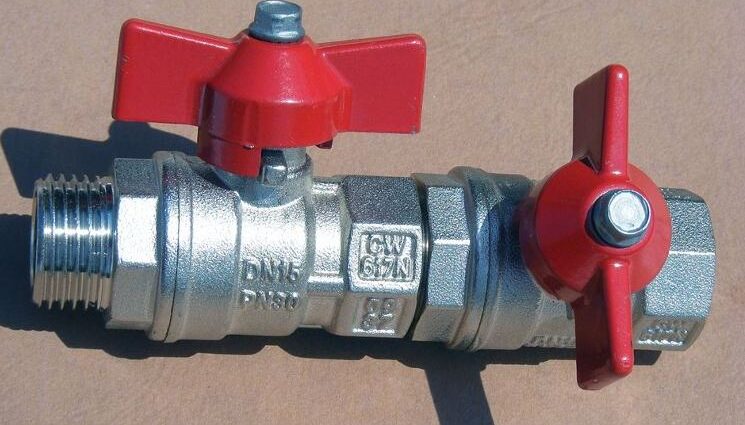Butterfly valves are rotational-motion valves used to stop, reduce, and regulate fluid flow. The butterfly valve has a rotating shaft attached to a disc. Easy and quick to operate with a 90° rotation of the handle, these valves can be shut or opened completely.
Butterfly valves come in a wide variety of types and each is intended for a particular purpose. In this article, we will discuss several applications of an industrial butterfly valve.
Advantages of butterfly valves
Easy to operate
By rotating the handle 90 degrees, the valve can be completely closed or opened. A butterfly valve with a large handwheel often has a gearbox, which connects the shaft to the handwheel through gears. Despite simplifying the valve operation, this decreases its speed.
Cost-effective
Butterfly valves use less material because of their design. Wafers that fit between two pipeline flanges are the most economical. In another type, the lug wafer design, bolts are used to connect two pipe flanges, and hole pass-throughs in the valve’s outer casing hold it in place. Additionally, Butterfly Valves are often made of less expensive materials.
Drive-on jet ski docks by Hisea docks are also affordable and built with high-quality material.
Requires less space
The compact design of butterfly valves makes them require less space as compared to other valves.
Less maintenance
The reliability of Butterfly valves and the ease of maintaining them make them very popular. They have a reduced rate of wear, so these valves can last longer. It also reduces the hours of maintenance required, as well as direct operating costs.
Applications
To regulate fluid flow
Fluids are typically regulated using butterfly valves. As a regulating valve, this is accomplished by the actuator, which is in communication with the stem and disc. A valve’s angular opening correlates to the amount of fluid that passes through it. The actuators are responsible for controlling the system’s flow rate.
It is possible to have a manual or automatic actuator. Flow controllers are necessary for remote control of a regulating valve. Depending on the system flow rate, the controller will automatically open or close the valve mechanism.
Pneumatic actuators, hydraulic pistons, and electric motors are examples of remote-controlled actuators. An attached handwheel can be operated manually via a gear system above the valve, which connects it to the spindle.
Flow isolation
It is possible to use butterfly valves to isolate flow because of their lightweight characteristics, easy manipulation, and quarter-turn mechanisms. However, it needs to be carefully selected in order to prevent a negative impact on your system.
Pumping systems, for example, require a smooth flow of fluid toward the pump impeller. Cavitation and system losses are prevented by doing so. Vortex formation must be reduced or eliminated for this to happen. A vortex can form when the flow is obstructed by a valve. Butterfly valves can suffer from this problem if the disc of the valve is interrupted.
It is for this reason that these kinds of valves should be used with care as isolation valves. System losses should be taken into account in calculations in order to maintain system efficiency.
Backflow prevention
Butterfly valves can provide backflow prevention in aggressive wash-down procedures used during food manufacturing processes. Because food processing plants must be clean and hygienic, backflow prevention is crucial.
As throttling valves
In addition to being commonly used to control large fluid flows, butterfly valves are not a good option for the precision throttling of viscous slurries. Butterfly valve manufacturers can now offer valves with fairly accurate throttle control because of recent developments.
Depending on the purpose of throttling, butterfly valves can be an effective solution. Designed to handle large, high-pressure, and high-temperature applications, they are manufactured with a higher industry standard. The valves typically manufactured for these purposes can handle high capacities and a wide variety of mediums, such as viscous oils and seawater.
For constant load applications
Despite being able to handle large volumes of fluid, butterfly valves are sensitive to changes in operating conditions. These valves are limited to handling significant loads. The difference in volume that can be achieved by allowing a few millimeters is huge.
A design can be enhanced to expand its control range, however, especially when pressure is precisely controlled in large applications.
For Space-Restrictive Applications
In addition to being economical and space-saving, butterfly valves are also highly reliable. Compared to ball valves, butterfly valves are advantageous for systems with limited space.
Conclusion
Butterfly valves are essential in industries for handling liquids and gasses. For applications requiring high volume handling, butterfly valves are commonly used. They are well suited to flow regulation, regulation, and control.
If you want to buy power sports goggles, go for a reputable seller.










Comments are closed, but trackbacks and pingbacks are open.